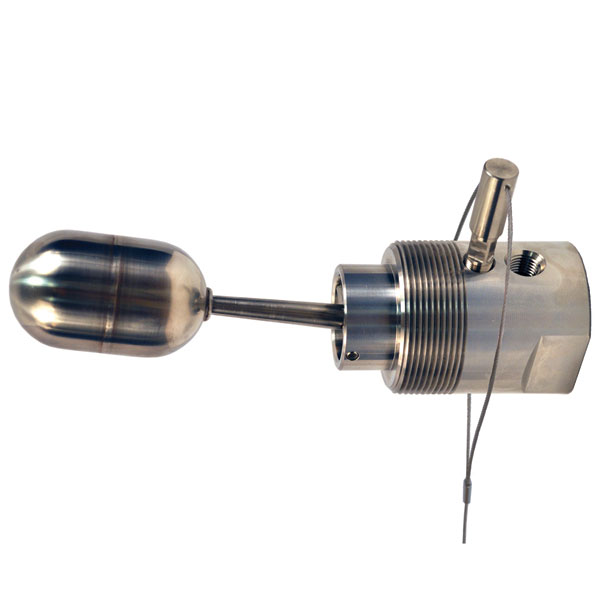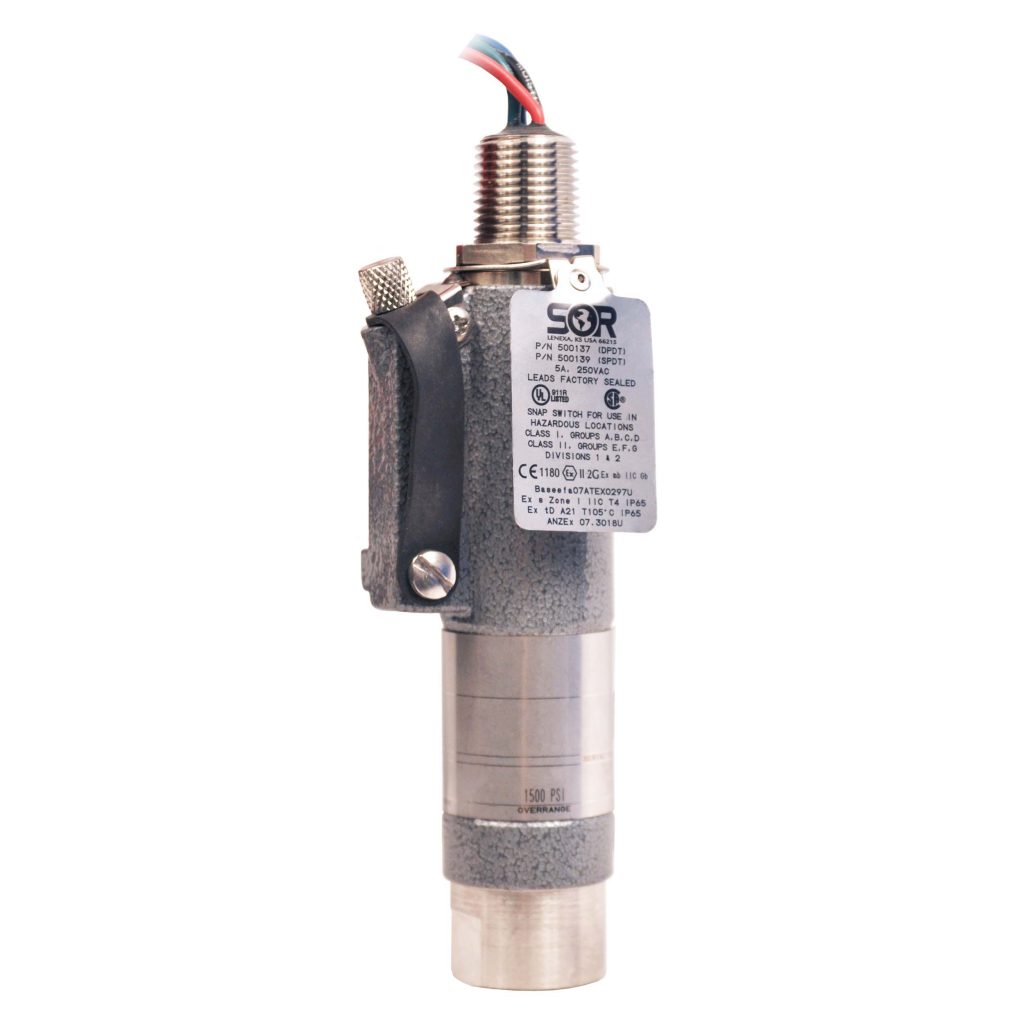
This article appears in the Fall 2012 issue of TEN.
Roy Dunlap’s business took off when his small machine shop and a me- chanical engineering professor at the University of Kansas collaborated on a new type of level switch. The mechanical switch, which used a static O-ring, was a revolutionary product for high-pressure equipment and delivery systems within the oil, gas and energy production industries. The product was so successful that Dunlap adopted Static O-Ring as the company’s name.
“There are stories where Roy took those first switches that were produced and put them in a sack and he would go out and try to sell them,” said Bert Benton, vice president of operations.
Soon Static O-Ring gained a reputation as an industry leader. Dunlap’s original lathe and other tools he used to create his ideas still sit in the company’s 110,000-square-foot factory in Lenexa, Kan. Dunlap, who recently celebrated his 90th birthday, used to come to the factory several years ago and work on new ideas, even though he had retired.
“He doesn’t do it anymore, but he’s a remarkable man,” Benton said.
The company’s name has changed to SOR, Inc., but it maintains the principles Dunlap used to grow the company. Dunlap called it the “three-legged stool” approach: quality, delivery and customer service.
“We think those (principles) are relevant today, but we actually have expanded and deepened the meaning,” said CEO Mike Waters, pictured above. “The quality relates not only to the quality of our products and conformity to specifications, but the quality of the data we share with our customers and the quality of our relationships with our customers and our associates.”
SOR continues to manufacture high-quality pressure and level-measuring instruments for the oil, gas, energy production, cement and water treatment industries, and is developing new products that will propel the company into the millennium.
Like SOR, many manufacturers in the Great Plains region have found success in both domestic and international markets while manufacturing overall in the United States still struggles to grow jobs and strengthen production following the recent recession.
U.S. manufacturing growth
In 1990, manufacturing accounted for one of six jobs in the United States. This also was a time when factories began migrating south and west.
“One reason could be that factory wages in the Boston and New York Districts were the highest among Fed Districts in 1990, perhaps driving some firms to seek cheaper domestic labor elsewhere,” said Chad Wilkerson, vice president and Oklahoma City Branch executive of the Kansas City Fed.
Other reasons such as unions, right-to-work laws, and state tax rates and incentives may have made other parts of the country more appealing.
Factory workers in states like Michigan, Indiana, Illinois, Missouri and Wisconsin saw more people join their ranks in the 1990s as labor increased throughout the Midwestern states by 5 percent. And nowhere was that more evident than in the auto-related industries, which experienced an increase in production and average salaries for factory workers hovered at $47,451.
The Midwest wasn’t the only region profiting from the migration. States in the Great Plains, from as far north as Minnesota and North Dakota to the Gulf shores of Texas, saw traditional industries and emerging companies, such as technology, increase production.
At the same time, Northeastern states still paid the highest factory salaries, with the New England area averaging $49,556 per worker and factories in the New York area paying an average salary of $48,064. Soon though, manufacturers in California and Washington would produce high-paying salaries as technology giants, such as Microsoft, Dell and Hewlett-Packard, emerged in the 1990s.
This, however, signaled the beginning of the decline in U.S. manufacturing employment.
Losing steam
Data from the Bureau of Labor Statistics showed a steady decline in production workersin the United States. In 1998, there were 12.2 million production workers. By 2002, a total of 10.3 million production workers were employed in the United States. By 2011, factories employed one of every 11 workers in the nation. This was part of a 34-percent decline in U.S. manufacturing jobs from 1990 to 2011.
“The decline wasn’t spread evenly across the U.S.,” Wilkerson said.
Wilkerson and associate economist Megan Williams’ new research, which uses the Federal Reserve districts as boundaries, shows most of the factory job losses in the United States occurred in the six eastern Federal Reserve Districts. New York lost more than half its factory jobs in the last two decades, and the Boston and Richmond districts lost almost half. Philadelphia, Cleveland and Atlanta districts each lost one-third.
“Factories located in the Fed districts further west fared better, but a few experienced sharp declines,” Wilkerson said.
In the Chicago, St. Louis and San Francisco districts, factory employment fell nearly 30 percent from 1990 to 2011, close to the national average, while the Great Plains districts of Kansas City, Dallas and Minneapolis lost 10 percent during that time. The losses, however, did not occur until the 2000s.
The United States also experienced the loss of manufacturers to overseas markets and emerging technology.
Of the 83 U.S. manufacturing industries for which detailed data employment is available at the state level, 78 lost jobs from 1990 to 2011. The six largest percentage declines were in textile-related industries, which were led by apparel knitting mills (85 percent of jobs lost), followed by print-related industries (44 percent).
“Printing and textiles historically relied heavily on relatively low-wage, labor-intensive production, and the globalization and productivity enhancements of the past few decades have decimated U.S. workforces in these industries,” Wilkerson said.
Strength in the Heartland
Although the decline affected all the regions in the United States, the Great Plains districts have consistently had either faster manufacturing job growth or smaller factory job losses than all other districts since the 1990s, Wilkerson said.
“Factory jobs actually grew in five Federal Reserve Districts during the 1990s, including more than 12 percent in each of the Great Plains districts,” Wilkerson said.
The Great Plains districts comprise Colorado, Kansas, northern Louisiana, Minnesota, western Missouri, Montana, Nebraska, New Mexico, North Dakota, Oklahoma, South Dakota, Texas, northern Wisconsin, Wyoming, and the upper Michigan peninsula.
Much of the Great Plains districts’ manufacturing growth in the 1990s was due to the region’s attractiveness, which includes available land, inexpensive cost of living and cost of doing business, reasonable wages, and a growth in population. This growth provided some districts with a diverse mix of industry.
This mix helped the Great Plains districts as regional attractiveness no longer played a leading role in stability and growth, especially as overall manufacturing in the United States declined in the early 2000s and then again after 2006.
“As in the 1990s, the three Great Plains Fed districts experienced better manufacturing employment trends than all other districts in both of the post-2000 cycles,” Wilkerson said.
A positive outlook
The most important factory industries in the Great Plains districts have remained largely unchanged in the past two decades, with printing and production of control instruments staying at the top in the Minneapolis Fed District. Aerospace products and parts manufacturing in the Kansas City and Dallas districts fell from first- to second-largest in each zone, replaced by meat processing in the Kansas City District, and agriculture, construction and mining machinery manufacturing in the Dallas District.
Despite the volatility within the industry, manufacturers in the Great Plains districts have a positive outlook even with slow recovery, and most recently, the 2012 drought.
Food prices and crop insurance will help farmers recoup losses caused by the drought, but manufacturers in the industry, such as as ranchers deplete herds early, and hog and poultry producers pay higher costs for feed.
There’s also concern about the drought’s effect on retail food prices. Historically, as food prices increase, families spend less on food. Data shows that families also tend to spend less on nonfood products, putting off purchases of clothing, electronics, automobiles and other manufactured products. They also cut back on vacations and entertainment.
But most industries in the Kansas City District reported modest gains in August and September, according to data the Kansas City Fed released in its monthly manufacturing survey.
“Factory activity in our region grew slightly faster this month in spite of the ongoing drought having a negative effect on producers of agricultural equipment,” Wilkerson said.
Opportunities for growth
A part of the regional attractiveness that gave manufacturers in the Great Plains success in the 1990s and the ability to surmount economic downturns in the 2000s is what some researchers describe as a Midwestern work ethic.
In a 2009 study, David Drozd, research coordinator of the Center for Public Affairs Research at the University of Nebraska-Omaha, compiled data from the 2008 American Community Survey. The statistics not only showed a higher percentage of people in the Midwest work, 83 percent, but that they start working younger and work more into their twilight years than the rest of the nation. The Midwest region also lost fewer jobs in the recession, and some Midwesterners worked harder, working two jobs after the economic downturn.
Waters says SOR’s customer service philosophy speaks well to that Midwestern work ethic, which has helped the company weather the economic crises of the past and the present.
“We’re willing to do the right thing, even if it’s the hard thing,” Waters said.
SOR, which is still owned by the Dunlap family, plans on staying in the region, and Waters is hopeful about the company’s future.
“This family is so committed to the associates and team members that have made this business successful for 50-plus years,” Waters said. “The heart of SOR will always be in this community, because SOR is made up of the people, not the products.”
Its employees helped the company succeed in manufacturing products in the United States and selling and supporting those products in domestic and overseas markets.
“We have significant presence in Asia, which is possibly atypical,” Waters said. “We are taking market share from domestic manufacturers in what is historically a low-cost production region.”
Today, about 65 percent of the company’s sales are in exports, mainly China, with a growing segment in the United Kingdom and Europe.
“We are doing that because of our service model and the attention of our quality process, the way we approach the market and how we approach our customer experience,” Waters said.
Benton says SOR’s approach to manufacturing is similar to Toyota and other companies that use a lean concept. Lean, however, doesn’t mean SOR strips down production, weakens the product and overworks employees, Benton said.
SOR found ways to cut waste, use every inch of space effectively for production, maximize technology, minimize inventory, and assess and control each step of the manufacturing process.
Waters said the company took what he described as a Midwestern approach to the recession: Don’t panic. SOR declined to divest significant assets and make significant and painful cost reductions for short-term gains. The company instead took a long-term approach that concentrated on maintenance, repair and operation in support of its products sold three, five and 10 years ago. When the recovery occurred, it placed the company in a strong position for growth.
“We were prepared better than other companies to take advantage of the rebound. We didn’t have to rehire and reinvest.”
SOR’s mature product line gives the company stability, which allows it to invest in new technologies and products.
That growth in new technologies will be based on data, not gut instinct, and also will rely on SOR’s reputation.
“Our brand has instant credibility,” he said. “The last thing we want to be is a surprise. In the measurement and control business you want to be very predictable. So we are predictably reliable.”
Retooling America
SOR is the type of manufacturer former U.S. Commerce Secretary John Bryson said the United States will rely upon as it reemerges from years of decline.
In an address at MIT earlier this year, Bryson said that “after a decade in which we lost too many manufacturing jobs, in the past two years we’ve added back nearly half a million. At the same time, the number of job openings in manufacturing has more than doubled.”
A Department of Commerce report released in May shows that manufacturing workers earn pay and benefits about 17 percent higher than the average American worker. It also shows that manufacturing is responsible for 70 percent of the United States private sector research and development, 90 percent of patents, and 60 percent of U.S. exports.
One area of manufacturing that is experiencing resurgence in the Kansas City District is related to the oil, gas and energy production industries. New technologies created a boom in U.S. oil production since the recovery, and energy-rich Oklahoma is leading the industry, adding 9 percent more jobs since 2010.
But even with the resurgence of traditional manufacturers in the Great Plains region, there can be unforeseen hurdles and fluctuations in the market, making many manufacturers in the Great Plains cautiously optimistic.
“Look at the last four years,” Waters said. “No one could have predicted how the recession would have affected not only our industry but the entire global marketplace.”

